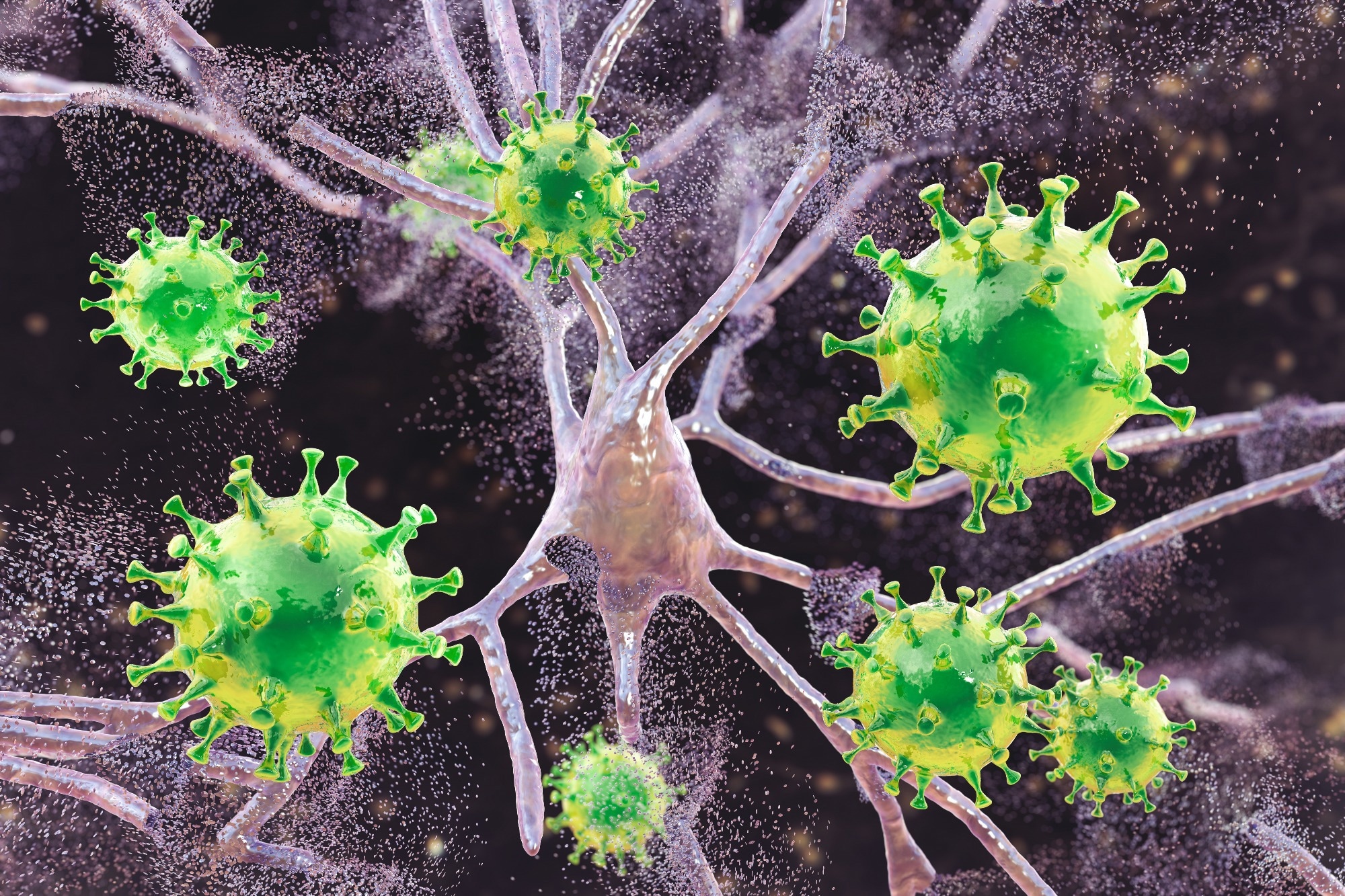Intracranial infections are relatively rare in children; however, an unusual surge was reported to the Southern Nevada Health District (SNHD) in October 2022. This rise in intracranial infections with severe symptoms appears to be part of a national pattern of increased cases over the first two pandemic years.
 Study: Notes from the field: pediatric intracranial infections — Clark County, Nevada, January–December 2022. Image Credit: Kateryna Kon / Shutterstock.com
Study: Notes from the field: pediatric intracranial infections — Clark County, Nevada, January–December 2022. Image Credit: Kateryna Kon / Shutterstock.com
Rising intracranial infection cases
The investigators carried out two studies in which they compared the observed number of cases with the expected number between January 2015 to December 2022. This was then updated with later data, extending the study period to March 2023.
The first study included hospitals in Clark County, Nevada, using discharge data to calculate the historical median. This was later updated using hospitalization data from 37 tertiary referral children’s hospitals in 19 Northeast, Midwest, South, and West states and the District of Columbia to determine national trends.
Children below 18 years of age with documented intracranial abscess and granuloma or extradural and subdural abscess at any stage of diagnosis or treatment were included in the study. Notably, none of these cases involved any preceding trauma or operative procedure on the neuraxis.
A median of one case was diagnosed every quarter in Clark County over the study period. However, the rate of intracranial infections was 0.5 every quarter during the four years preceding the onset of the coronavirus disease 2019 (COVID-19), whereas the rate increased to 1.5 cases each quarter in the first two years of the COVID-19 pandemic.
Between May 2020 and May 2021, monthly cases were below the median at baseline. Thereafter, case counts rose from August 2021 and remained above the baseline median until March 2023. Nevertheless, case counts did not rise above the maximum reported before the study period until December 2022.
In December 2022, intracranial infection cases peaked well above the maximum at about 60 cases every month. From January 2023, cases stopped rising; however, they remained above the maximum until March 2023. This pattern was observed throughout all regions included in this study.
Identified risk factors
Of the 18 cases identified in southern Nevada in 2022, 12 occurred in males, and the median age was 12 years. A total of 15 cases required craniotomy to drain the intracranial pus with a median hospitalization period of 15 days.
Most children were symptomatic before hospitalization with cold-like symptoms; however, some reported headaches with or without fever. Most patients visited the emergency department (ED) before their eventual hospitalization.
The median gap from the onset of symptoms to hospitalization was seven days. In 50% of the cases, the child went swimming during the prior month; however, no common pool location was reported.
The highest number of cases was reported during the winter of 2022 and 2023 months when high levels of respiratory viruses were circulating. Notably, viral infection of the respiratory tract and sinuses is associated with intracranial infections in children. However, other demographic and clinical attributes of the affected population did change throughout the study period.
The increase in intracranial abscesses in children could be partly due to increased exposure to respiratory pathogens after the mask mandate was reversed in Nevada.
What are the implications?
The pattern of low case counts prior to the pandemic, followed by a slow rise from mid-2021 and a significant rise at the end of 2022, was consistent throughout the United States.
This analysis in a large, geographically diverse network of children’s hospitals showed elevations in pediatric intracranial infections beginning in mid-2021 with a large spike in winter 2022–2023, both nationally and by U.S. Census Bureau region.”
Despite the rising case counts at the end of 2022, intracranial infections in children remain a rare event; however, these infections are often a complication of respiratory and sinus infections.
The CDC recommends that all persons aged ≤18 years remain current with recommended vaccinations, including influenza and COVID-19.”
Vaccination against these respiratory viruses helps control surges in respiratory infections among children and reduces the incidence of intracranial infection.
Journal references:
- Penney, J. A., Zhang, Y., Bragg, T., et al. (2023). Notes from the field: pediatric intracranial infections — Clark County, Nevada, January–December 2022. Morbidity and Mortality Weekly Report (MMWR). doi:10.15585/mmwr.mm7222a4.
- Accorsi, E. K., Hall, M., Hersh, A. L., et al. (2023). Notes from the field: update on pediatric intracranial infections — 19 states and the District of Columbia, January 2016–March 2023. Morbidity and Mortality Weekly Report (MMWR). doi:10.15585/mmwr.mm7222a5